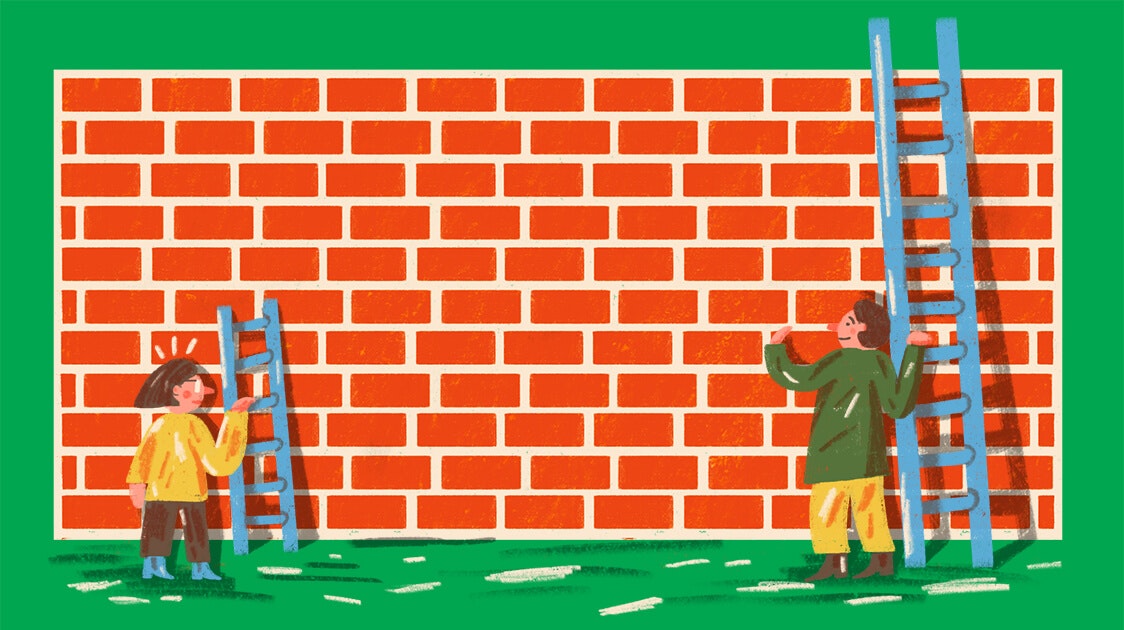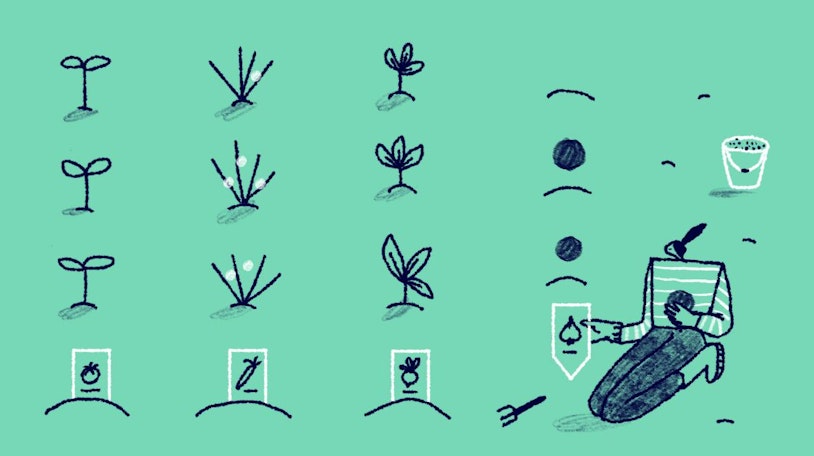Tier 2 support team members are the folks responsible for handling technical escalations and more advanced inquiries that are beyond the skills or knowledge of your first level customer service representatives.
When supporting a highly technical product, a tier 2 team may handle implementation and core product guidance. In contrast, the tier 2 team supporting a retail product may handle lower priority bugs, dispute resolutions, or triage, as their skills are less about product knowledge and more about service experience.
In our examples below, we've chosen to use a SaaS (software as a service) product that helps users build and design websites. In the case of this company, a tier 2 support team would work directly with customers explaining technical details of the product and triaging or resolving bugs.
As we outline what a tier 2 support job description for this company might look like, consider which elements work for your team and which may need to be adjusted.
Section 1: About the job
The information at the top of your tier 2 support job description will serve to attract and engage potential applicants. Beyond that, it will also set the stage for how your company treats support, explain what kind of culture you have, and differentiate you from other places candidates might apply.
In this section, while you will undoubtedly describe the role itself, you should focus on your company and how support fits within the larger ecosystem. For instance, if there are exciting aspects about how your company is structured or things within your culture that are unique, this is the place to mention them.
It's also a great place to sell your company's values and how they fit into how you offer support. Many companies are hiring for tier 2 support team members: Why should an applicant be interested in working for you?
An example:
<li>Empower each other.</li>,Empower each other.
Beyond these basics, this section is an excellent place to describe the unique benefits of your workplace and the deeper issues that your product resolves for your customers.
You may also want to talk about the company's stage, if you've taken on funding or are a public company, and how many people work on the team. Some applicants may be happy working for a more established, larger team, while others prefer to work scrappily and wear many hats.
You may also include information in this section about who this role reports to or the hours they're expected to work. It's particularly effective for international teams to indicate which time zone(s) they are seeking coverage for, and you’ll see specific examples of this below.
Section 2: Key responsibilities
Whereas the "About the Job" section seeks to describe your company and how tier 2 sits within it, this section gives the potential applicant a detailed view of what they'll do for their everyday work.
Despite wanting to portray your company in the best light to attract possible candidates, it's essential to be as detailed and honest as possible in this section.
While your potential candidates may have been hypothetically imagining themselves working at your company, this is the first place where they'll be able self-identify with the specific role. If you don't include all of the nuts and bolts, you may attract individuals who aren't the best fit.
Not only does this have the potential to create attrition within your company, but it can also create dissatisfaction among applicants. People share their interview experiences, and if you've misled applicants with a job description that isn't honest, people will talk about it.
Here's an example of what the "key responsibilities" section of your tier 2 support job description could look like:
<li>Scheduling calls with prospects if they need to debug or troubleshoot a technical problem.</li>,Scheduling calls with prospects if they need to debug or troubleshoot a technical problem.
Lists like these can get pretty long and drawn out. Focus on using descriptive, concise language to make it impactful.
Section 3: Skills and qualifications
Next, provide potential applicants with the credentials they will need to do the job. Include only necessary information here — or if it's a nice-to-have but not necessary, indicate that instead.
Many companies choose to have two sections under this header, one that shows qualities someone will need immediately and another area that indicates "stretch goals" or things that would signify a dream candidate.
Another consideration here is that the qualifications and skills may be an additional layer on top of the skills and capabilities required for your tier 1 support team. Consider where you want to list all of those out, or instead link back to a tier 1 job description as a reference.
Lastly, you may want to list out specific programming languages if those are a requirement for this role. You may choose to have that under a separate section or within the main section of the post.
Here's what this section may look like:
<li>You enjoy empowering users with the knowledge to do things for themselves in the future, not just fixing things for them.</li>,You enjoy empowering users with the knowledge to do things for themselves in the future, not just fixing things for them.
Keep the descriptions short enough that they're easy to skim but detailed enough to inspire and excite the reader. In this section, we did not include necessary education — formal education does not always have a direct impact on acquired skills for this type of role.
5 great examples of real tier 2 support job descriptions
There are many names that tier 2 support falls under. Some companies call them "support engineers," some call them "support II" or “second level.” In these tier 2 support job description examples, you'll see a few different ways of referring to this role, as well as several different methodologies for writing the page.
1. Monday, Technical Support Engineer
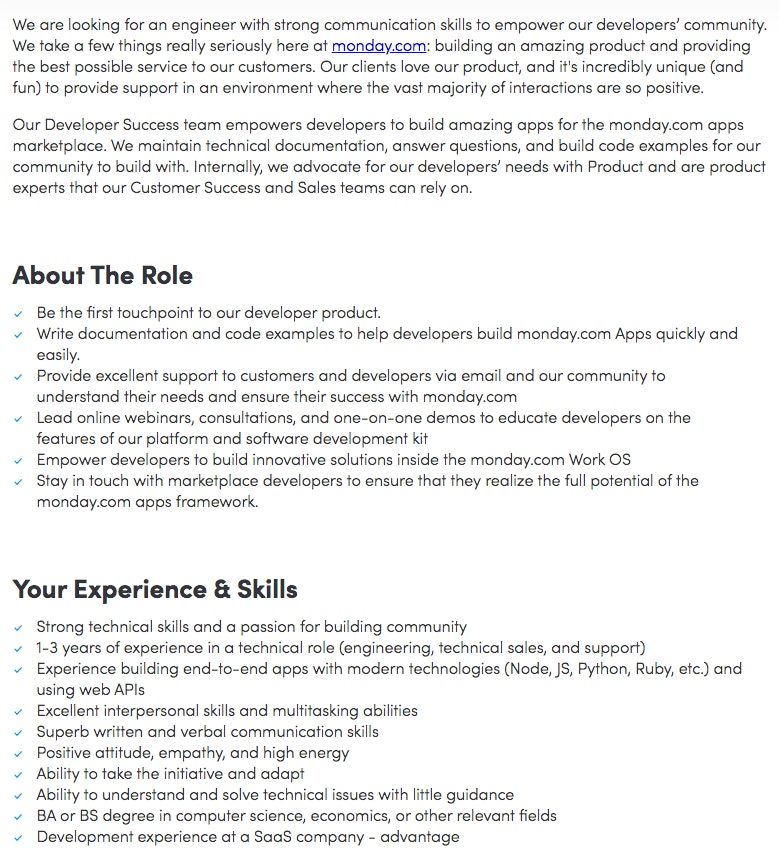
The tier 2 support job description posted by Monday hammers home that it's not just technical knowledge that will set candidates apart, but knowledge of Monday's product itself. It also explains which skills are required and which are nice to have.
2. Marketplacer, Technical Support Specialist
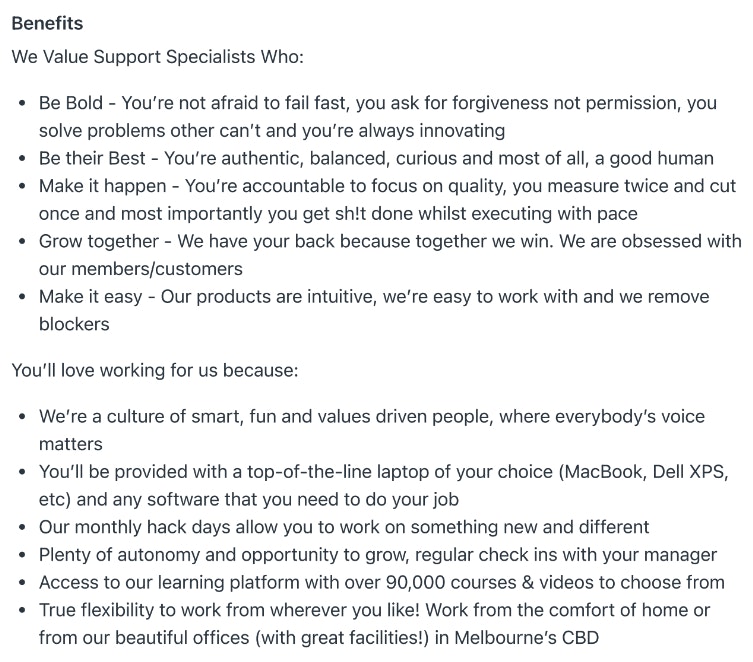
View the full job description
Rather than just going through the benefits in their "About the Job" section, Marketplacer gives them a front and center position within the job description. They recognize that while the role may attract potential candidates, the benefits may do more of the heavy lifting if given a chance.
While having separate sections like these may not be a good fit for your product, it’s a way to create a job description that is easy to skim.
3. Webflow, Technical Customer Support Specialist

View the full job description
Right from the start, this job description lets folks know where they'll need to work from. For a large, international company like Webflow, this is very important.
The introduction is short and sweet before getting right into what the applicant can expect from the role. Unlike some other job descriptions, this one ends with a large section about the company and the benefits that it offers.
Benefits sweeten the pot. The applicant can already imagine their fit within the role and see the cherry they'd receive on top if they were hired.
4. Lattice, Technical Support Engineer

View the full job description
What sets this job description apart is how much it links out to explanatory material. Instead of just saying that the company does something, Lattice uses a link to prove its practices. For instance, notice the sentence "Check out what our CX team is up to here!" that links to the CX team's Notion page.
5. Snowplow Analytics, Technical Customer Support Engineer
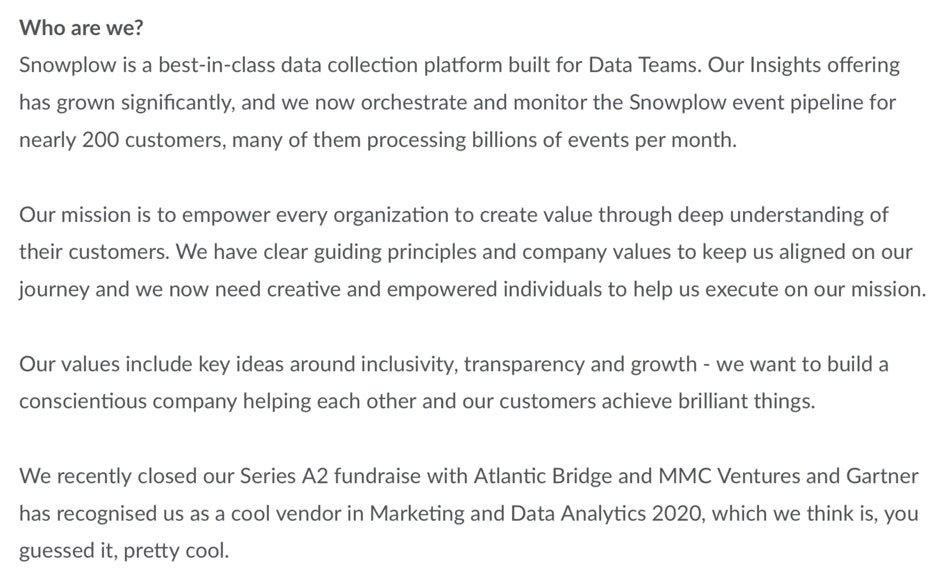
View the full job description
Snowplow starts by letting the potential applicant know what time zone they'll be working in. Instead of specifying a location, they recognize that a remote applicant may be willing to work hours outside the traditional 9-5.
Snowplow brings their values into this job description more than many of the other listed examples. They include them right in the introduction and throughout each section below it. If you are a very values-driven company, this may be an excellent way to emphasize that to your applicants.
Go forth and create great teams
Whether you're calling it a technical support engineer, premier support engineer, or even technical customer service role, your tier 2 support job description should encompass enough helpful information to attract your ideal candidates.
Emphasize the pieces of your culture that make your company and your tier 2 team unique. Start by telling potential team members what sets you apart and how they would be a great fit.
Allow applicants to visualize themselves within the role by providing remarkable detail and context for the work they'll be doing. When you're honest with them right from the start, you are building the trust and safety they will need to succeed.
<li><a href="/blog/customer-onboarding-specialist-job-description/">Customer Onboarding Specialist</a>,<a href="/blog/customer-onboarding-specialist-job-description/">Customer Onboarding Specialist


